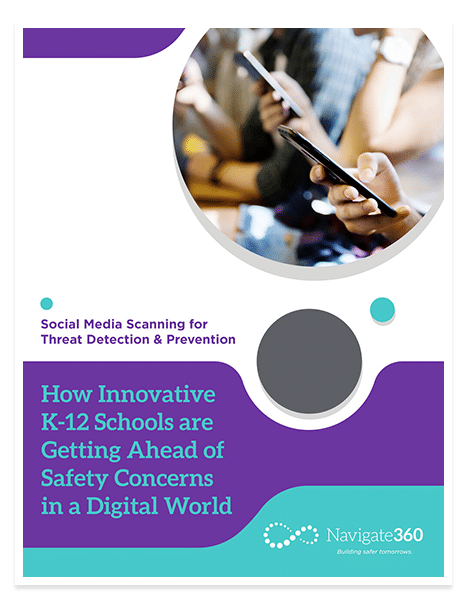Social Media Scanning for Threat Detection & Prevention
In a rapidly changing digital landscape, K-12 students are communicating (almost exclusively) through screens. These digital conversations are happening across numerous online channels and have become threat detection gateways for school administrators. While not all issues are born through social media, these online channels have become communication hubs, where students frequently share their intentions (leakage), use harmful language, and expedite acts of violence.
While school officials and district leaders have learned how to proactively look for these signs, the digital era has shifted threat detection and prevention methods. Gone are the days of bathroom stall scribbles, note passing, and desk graffiti—now, warning signs are scattered via digital conversations across social media platforms, making it increasingly difficult for school administrators to identify harmful student intentions.
To get ahead of these digital threats, school leaders are turning to social media scanning technology.

How Does Social Media Scanning Work?
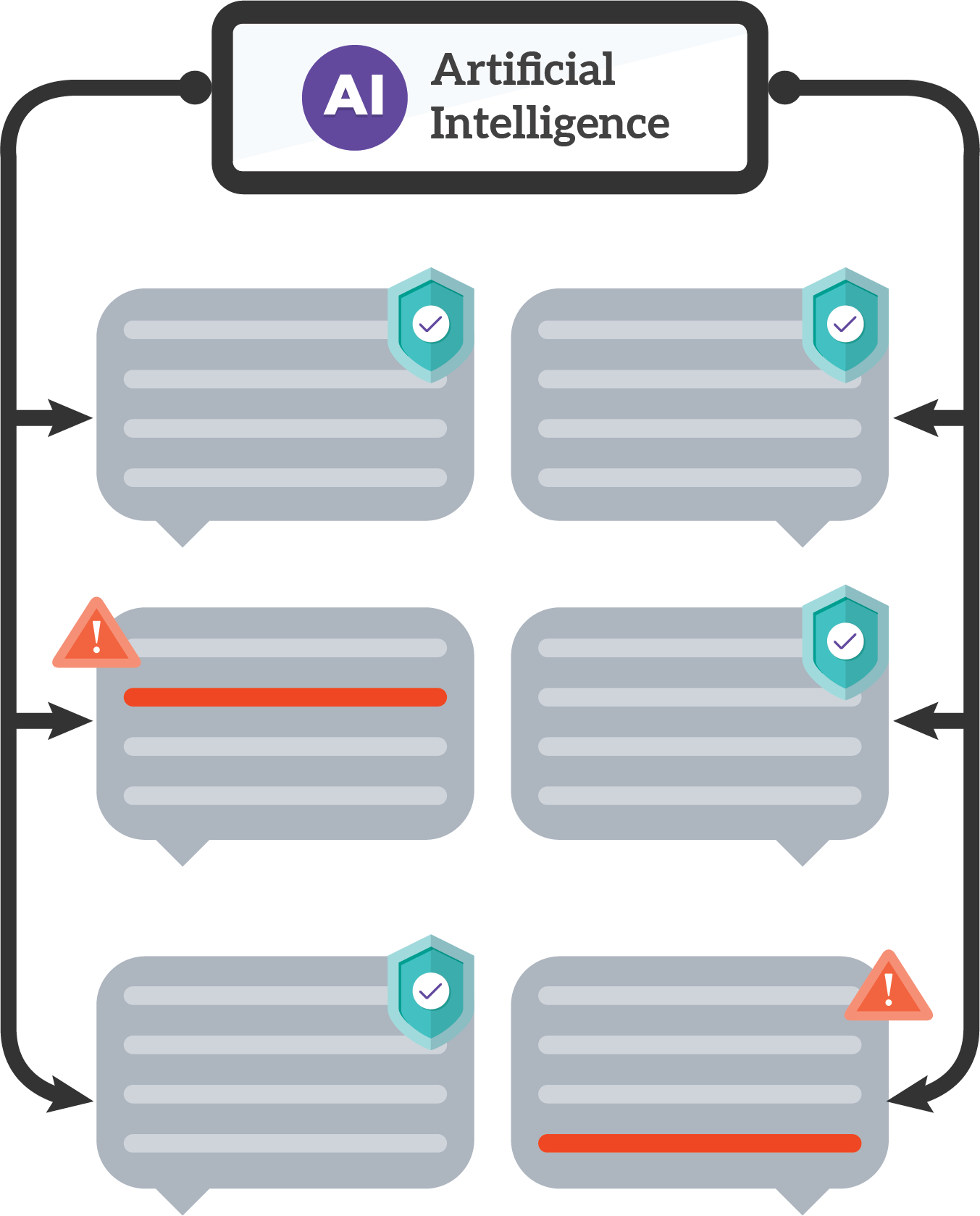
Social media scanning uses modern Artificial Intelligence (AI) technology to ethically and unbiasedly analyze students’ digital conversations in context—uncovering school threat leakage through public mentions of harmful language across social media platforms. These threat detection tools are designed to scan for potentially harmful or suspicious content, which is then matched across various checkpoints to account for images, context, and syntax.
Social media scanning and sentiment analysis provides school administrators with an additional layer of support that can help officials identify leakage. This is an invaluable threat detection and prevention technology that schools can use to get ahead of potential safety concerns as well as the community’s engagement.
The Benefits of Social Media Scanning for K-12 Districts
According to a recent report conducted by the U.S. Department of Justice (DOJ) on essential actions to improve school safety, which includes social media scanning, adolescents and elementary school students spend an enormous amount of time online. In fact, 89% of 13–17-year-olds reported that they use the internet several times a day (half reported to be online “almost constantly”). When social media scanning is ethically implemented with protocols that safeguard student privacy and free speech, the COPS Office School Safety Working Group agrees with the Federal Commission’s assessment that defensive social media scanning systems “can be an effective tool in a comprehensive, multilayered school safety plan.”
Modern social media scanning technology can help all school leaders reduce the risk of tragic incidents; turning warning signs into opportunities to intervene and improving the climate in their schools in the process.
In large school districts, this benefit grows as student enrollment numbers increase. The more students in a district, the more social conversations being had.
Here’s an in-depth look at these benefits, particularly in large school districts: Social Media Monitoring vs. Social Media Scanning: Know the Difference
Social media is a huge part of the new digital landscape, especially for Generation Z. K-12 students in this generation are considered the first digital natives; they were born into an age defined by technology and online platforms. According to surveys performed by The American Academy of Child and Adolescent Psychiatry (AACAP), approximately 90% of students (age 13-17) use social media. Out of those surveyed, 75% reported having at least one social media profile and 51% reported visiting a social media site at least daily.
Reduced Risk of Tragic Incidents
Proactive social media scanning provides school administrators with the technology they need to get ahead of concerning behavior before it escalates. The ability to quickly analyze harmful online conversations concerning school climate and student safety, thereby reducing the risk of tragic incidents.
In large districts with high student enrollment, administrators must review a greater volume of activity in order to provide actionable results. As threats and harmful digital content go unnoticed, the leakage can become a liability. In these districts, social media scanning and AI-language engines have proved to be an invaluable resource, improving online threat detection and reducing the number of harmful incidents in schools. To provide perspective, we’re talking about scanning more than 2 billion permutations of harm language in near-real time.
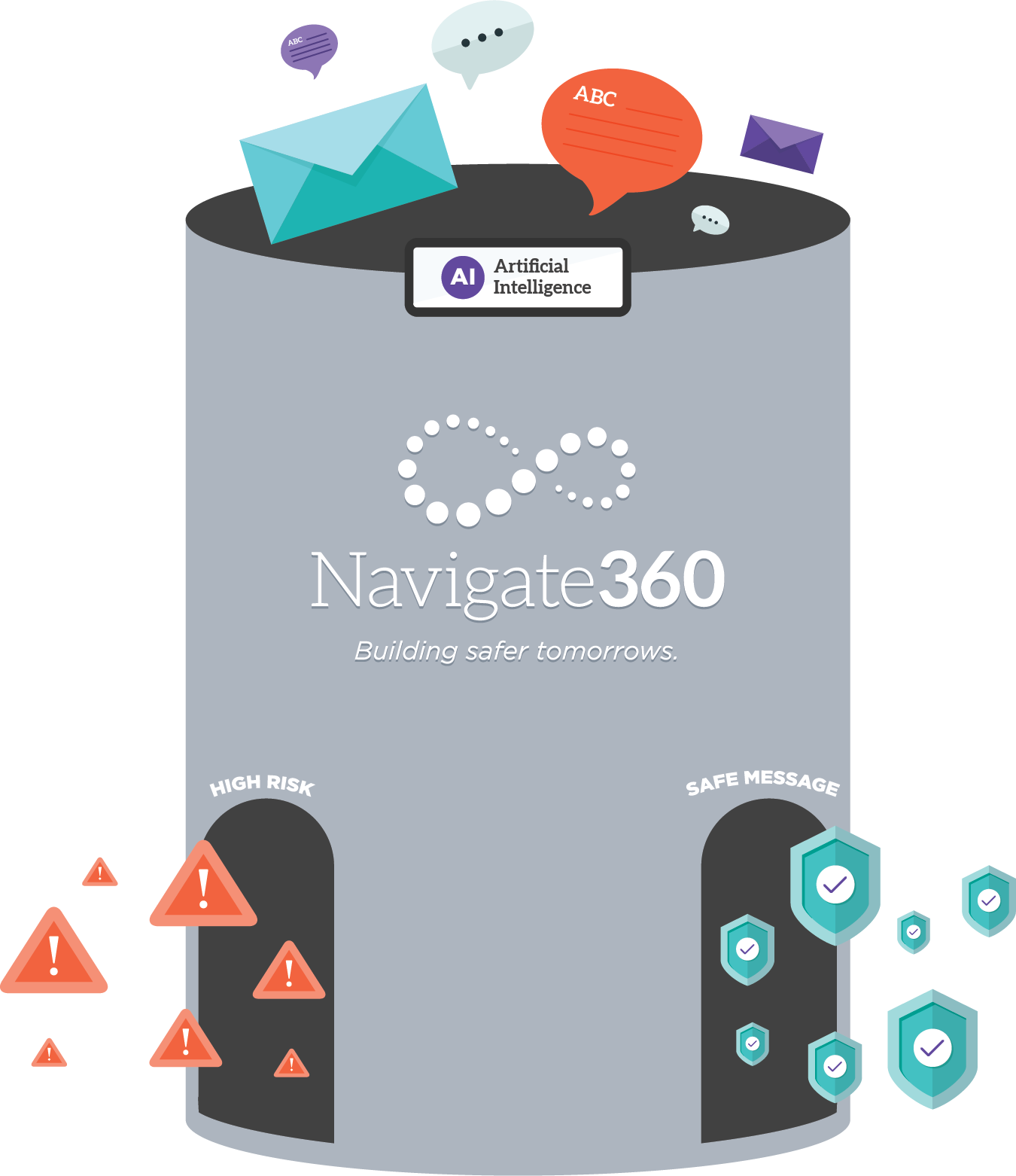
 Real Examples of Threats, Assaults, and Harmful Digital Content Detected by Navigate360’s Social Media Scanning.
Real Examples of Threats, Assaults, and Harmful Digital Content Detected by Navigate360’s Social Media Scanning.
Warning: Some of these may be difficult to read.
- I feel like calling in a school shooting threat today
- I wanna line [REDACTED] with explosive devices! Old white dude needs to die
- We have plans to plant explosives at [REDACTED] middle school
- Somebody keeps threatening to kill me on snapchat. I blocked them but they keep making new accounts. How do I report this?
- I have proof that he raped me and he’s harassing other students. we can’t let this happen again
- I’ve spent my whole life being ridiculed, degraded, and beat down by people and I wish somebody would just murder you all. You deserve to die.
- an AU gamer named [REDACTED] threatened to massacre your school
*AU = Among Us, a game
Warning Signs Become Prevention Opportunities
 The ability to identify concerning student behavior through communications and threats is a crucial step to preventing acts of violence. Harmful language, phrases, and images are often leaked through digital communication platforms before events occur; these threats offer unique insight into an individual’s frame of mind and can preclude acts of harm towards others. According to the 2021 US Secret Service Report on Averting Targeted School Violence, 74% of students who intended to commit acts of harm (plotters) made some form of written, verbal, visual, or online statement that was considered concerning. For half (49%) of these plotters, communications illustrated beliefs typically associated with violence. And the statements for more than one-third (40%) of plotters included threats of harm to others (e.g., specific individuals, specific groups, or former schools).
The ability to identify concerning student behavior through communications and threats is a crucial step to preventing acts of violence. Harmful language, phrases, and images are often leaked through digital communication platforms before events occur; these threats offer unique insight into an individual’s frame of mind and can preclude acts of harm towards others. According to the 2021 US Secret Service Report on Averting Targeted School Violence, 74% of students who intended to commit acts of harm (plotters) made some form of written, verbal, visual, or online statement that was considered concerning. For half (49%) of these plotters, communications illustrated beliefs typically associated with violence. And the statements for more than one-third (40%) of plotters included threats of harm to others (e.g., specific individuals, specific groups, or former schools).
Social media scanning allows schools to scan permutations of harmful language in near-real time, alerting the appropriate school administrators only when potential action is required. Through this multilayered school safety plan, officials can quickly identify, intervene, and get help for students who’ve expressed concerning behavior through social media platforms and who may be at risk of harming themselves or others—turning warning signs into opportunities to prevent tragedies—from school shootings to attempted suicides. Social media scanning quite literally saves lives.
Improved School Culture & Climate
School climate impacts the social, emotional, and academic success of K-12 students. While a positive setting can influence the development of effective conflict resolution skills, an unhealthy school climate is often associated with an increase in student aggression, student exploitation/suspension rates, and dropout risk. This concept is supported by “Maslow before Bloom,” which indicates that students’ basic social and emotional needs must be met in school settings before educators can effectively introduce accelerated learning curricula. By establishing a positive school climate that caters to the overall wellbeing of students, districts can develop and maintain a safe school campus, supportive school environment, and trusting relationships throughout the school community.
As a school leader, safety is undoubtedly a top concern; but how do students feel about it? According to the April 2021 Navigate360 | Zogby Poll:
- 42% of students believe their school is doing its best to create an atmosphere of physical and emotional safety.
- 55% of students believe that school leaders think safety is a priority.
- 42% of teens believe schools are spending enough time and money to keep students safe.
- 35% of students (one in three teens) say they feel the “least safe” in school compared to their homes, after-school jobs, favorite restaurants, or places of worship.
These key findings showed that the majority of students felt their basic need for safety was not being met in schools, which is why schools must implement processes and protocols that support the physical, social, and emotional safety of students. Social media scanning is one applicable resource that can manage near-real time data to accurately assess student needs while simultaneously providing an extra layer of security that offers a greater sense of community safety.
Districts can utilize scanning technology to accurately measure school climate by examining cultural considerations and establishing prevention/intervention strategies that support students’ needs—making students feel that their schools are taking their physical and emotional safety seriously. According to the National Association of School Psychologists (NASP), using valid, multi-dimensional resources—such as social media scanning—to assess the emotional, physical, and behavioral aspects of school climate can provide ongoing support to districts as they collect information to evaluate school climate and take actionable steps to address student needs throughout the community. Through the application of social media scanning, school administrators can scan digital communications for harmful language and provide invaluable insight when determining the social-emotional needs of students. With it, school administrators can share data with relevant stakeholders, identify specific ways to improve school climate for the benefit of all communities, and allow for the continued assessment of school climate as it fluctuates over time.
School Threat Detection in the Evolving Digital Landscape
Within the ever-changing digital landscape, it has never been more important for school leaders to pay close attention to harmful language and threatening online communications. Social media scanning and sentiment analysis allows school administrators, particularly those in large districts, to benefit from an additional layer of digital security in near-real time. By scanning for harmful language across digital platforms, schools can proactively keep students safe and intervene to provide plotters with the mediation they require. All of these factors combined can reduce the risk of tragic incidents in schools, turn warning signs into preventative opportunities, and improve school climate—helping develop the social, emotional, and physical safety of students and save lives in the process.
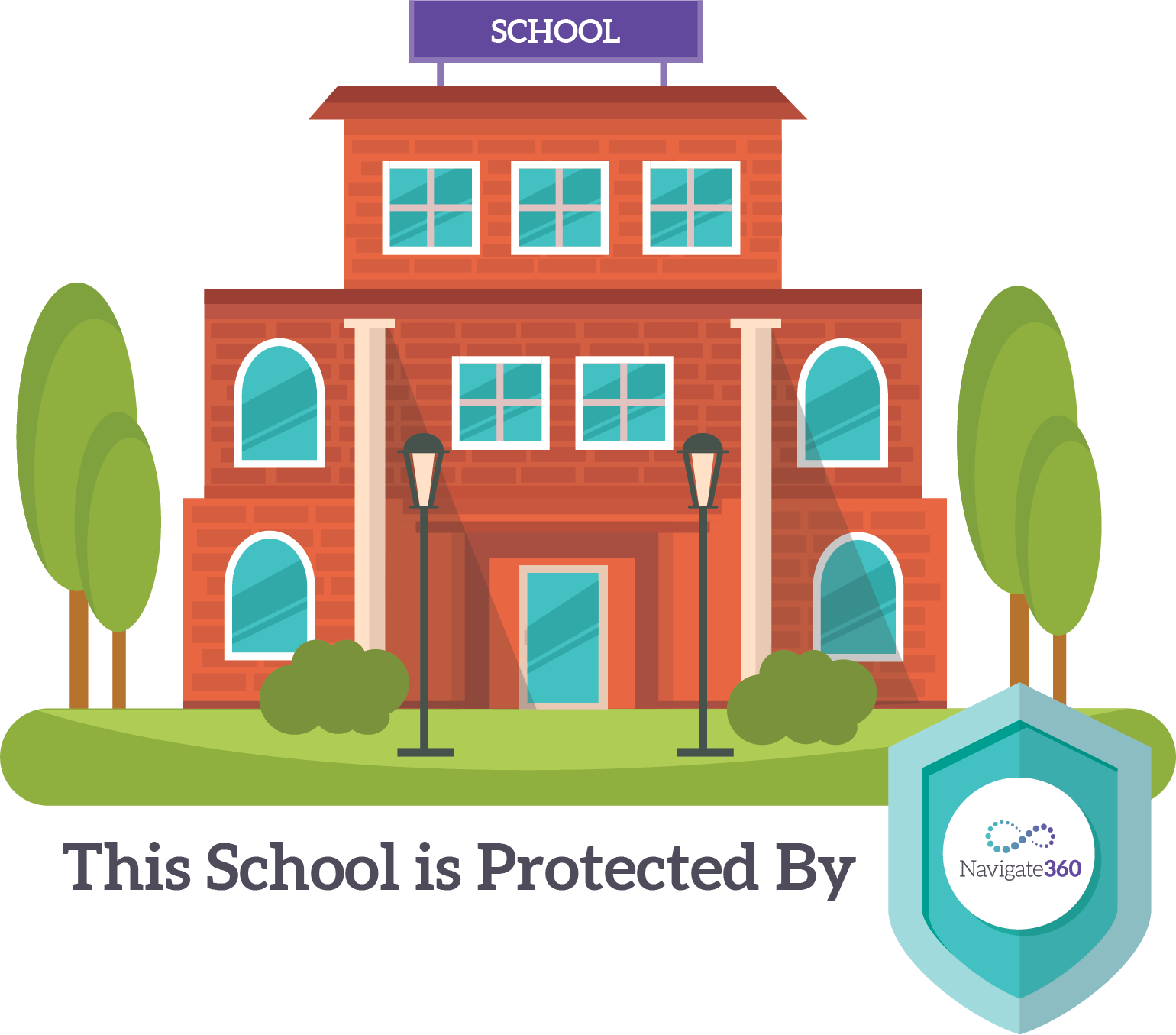

Fast Facts on Navigate360 Detect's Social Media Scanning for Schools
Download Now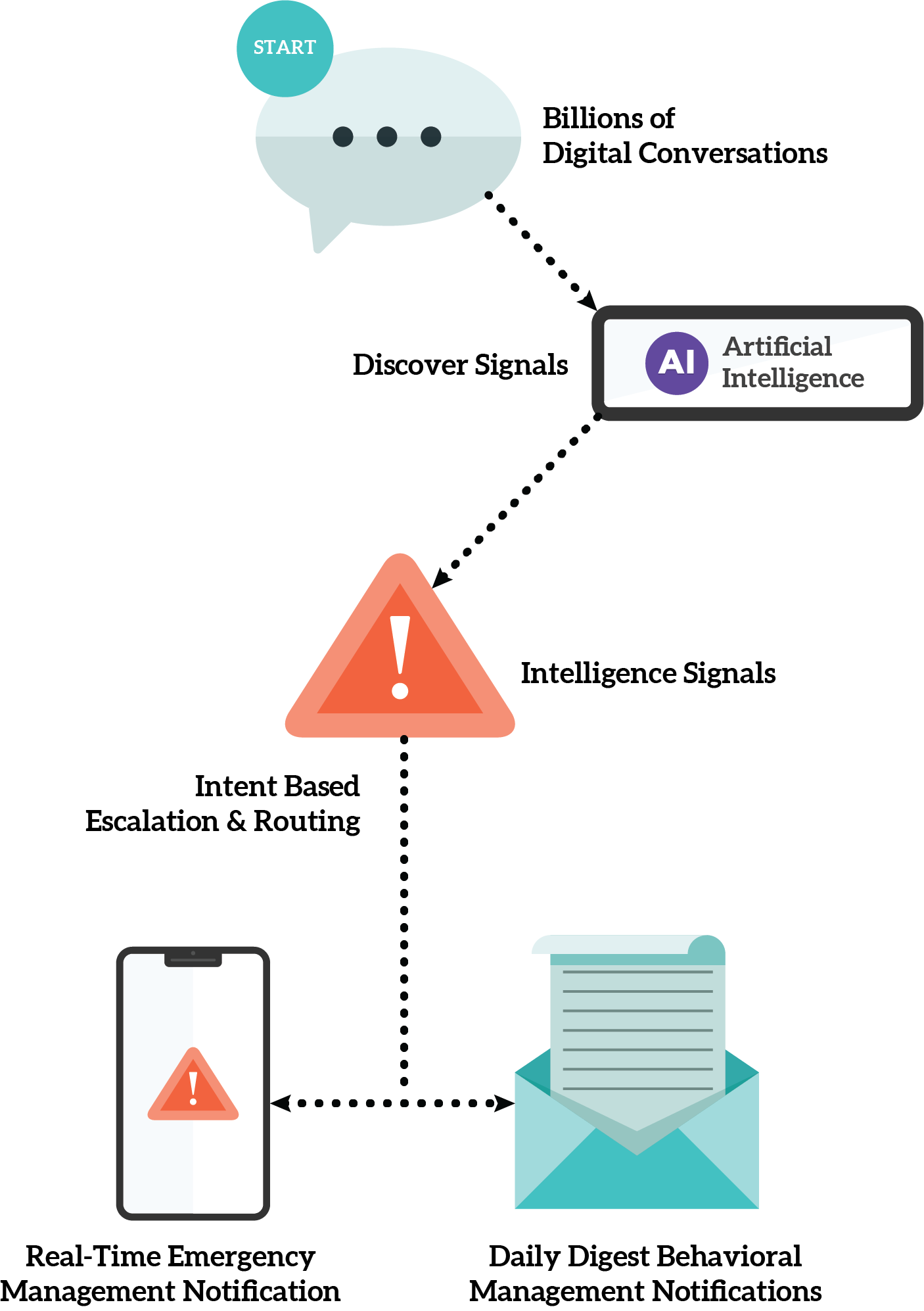
Improve Violence Prevention & Awareness in Your District
One way to stay ahead of harmful intentions in your district is with social media scanning technology. These modern threat detection and prevention systems use proactive and ethical technologies and AI-language engines to scan for digital warning signs in near-real-time. Navigate360 Social Media Scanning Technology is one of the most ethical approaches to add to your schools’ multilayered online security plan. Designed to provide a holistic view of your district’s overall safety and school climate, our intuitive platform puts you where digital conversations are happening. With it, school administrators will be able to proactively identify threats of violence on public social media platforms and stay informed in the community.
Getting Started with Navigate360 Social Media Scanning Technology
The world is changing, and school leaders must find ways to identify harmful acts at a digital speed – before they negatively impact their staff, students, and community.
Navigate360’s Social Media Scanning Technology puts you where digital conversations are happening, helping you to identify and assess threats of violence through public social media content.
Stay ahead of harmful intentions. Contact us today to learn more.

